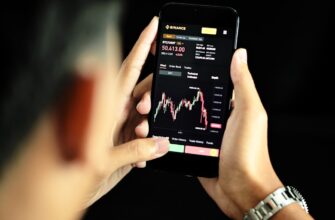- What Is the Bitcoin Halving Countdown UTC?
- Why UTC Matters for Bitcoin’s Halving
- Tracking the Halving: Key Countdown Resources
- Historical Halvings: Impact on Bitcoin’s Ecosystem
- Preparing for the 2024 Halving: What to Expect
- Bitcoin Halving Countdown UTC: FAQ
- 1. What exactly is Bitcoin halving?
- 2. Why is the countdown in UTC?
- 3. When is the next halving?
- 4. How does halving affect Bitcoin’s price?
- 5. Where can I see a live countdown?
- 6. Will Bitcoin mining become unprofitable?
What Is the Bitcoin Halving Countdown UTC?
The Bitcoin halving countdown UTC tracks the exact time until Bitcoin’s next “halving” event—a pre-programmed reduction in block rewards for miners—based on Coordinated Universal Time (UTC). This global time standard ensures synchronized tracking worldwide. Occurring roughly every four years, halvings slash new Bitcoin creation by 50%, capping total supply at 21 million. The next halving is projected for April 2024, with countdown timers using UTC to provide real-time precision.
Why UTC Matters for Bitcoin’s Halving
UTC eliminates timezone confusion, creating a universal benchmark for the halving. Since Bitcoin blocks are mined globally 24/7, UTC ensures:
- Global Synchronization: Investors, miners, and exchanges coordinate actions using one time standard.
- Accuracy: Block timestamps use UTC, making countdowns reliable.
- Transparency Prevents regional discrepancies in event timing.
Ignoring UTC risks missing critical market movements around halvings, which historically trigger volatility.
Tracking the Halving: Key Countdown Resources
Monitor the countdown accurately with these UTC-based tools:
- Bitcoin Block Halving Countdown: Displays real-time estimates using live blockchain data.
- CoinGecko / CoinMarketCap: Major platforms feature countdown timers synced to UTC.
- Mining Pools (e.g., F2Pool): Often show countdowns for miner-specific planning.
Tip: Bookmark a countdown page and set UTC-based alerts for the event day.
Historical Halvings: Impact on Bitcoin’s Ecosystem
Past halvings (2012, 2016, 2020) reveal critical patterns:
- Supply Shock: Reduced new coins often increase scarcity, driving demand.
- Price Surges: All previous halvings preceded major bull runs (e.g., 2017’s ~20x peak).
- Miner Adaptation Less efficient miners drop out, consolidating network security.
Post-2020 halving, Bitcoin rallied from ~$8,000 to an all-time high of $69,000—highlighting the event’s market influence.
Preparing for the 2024 Halving: What to Expect
Anticipate these potential outcomes based on historical data and current trends:
- Short-Term Volatility: Price swings likely pre- and post-halving as markets react.
- Long-Term Appreciation: Reduced inflation could boost BTC’s value proposition over years.
- Network Upgrades Innovations like Ordinals may amplify demand amid lower issuance.
Miners should optimize efficiency; investors might dollar-cost-average ahead of volatility.
Bitcoin Halving Countdown UTC: FAQ
1. What exactly is Bitcoin halving?
Bitcoin halving cuts the reward for mining new blocks by 50% every 210,000 blocks (~4 years). It controls inflation until all 21 million BTC are mined.
2. Why is the countdown in UTC?
UTC is the global time standard. Bitcoin’s decentralized network relies on it for consistent block timing worldwide, avoiding timezone errors.
3. When is the next halving?
Expected in April 2024 at block 840,000. Exact timing depends on block discovery speed—countdowns update live using UTC.
4. How does halving affect Bitcoin’s price?
Historically, reduced supply post-halving increased prices long-term. Short-term effects include volatility due to speculation.
5. Where can I see a live countdown?
Trusted sources include Blockchain.com, Buy Bitcoin Worldwide, and crypto exchanges like Binance—all display UTC-based timers.
6. Will Bitcoin mining become unprofitable?
Less efficient miners may struggle post-halving. However, price increases and efficient operations often offset reduced rewards.
Stay informed via UTC countdowns to navigate this pivotal event strategically.








